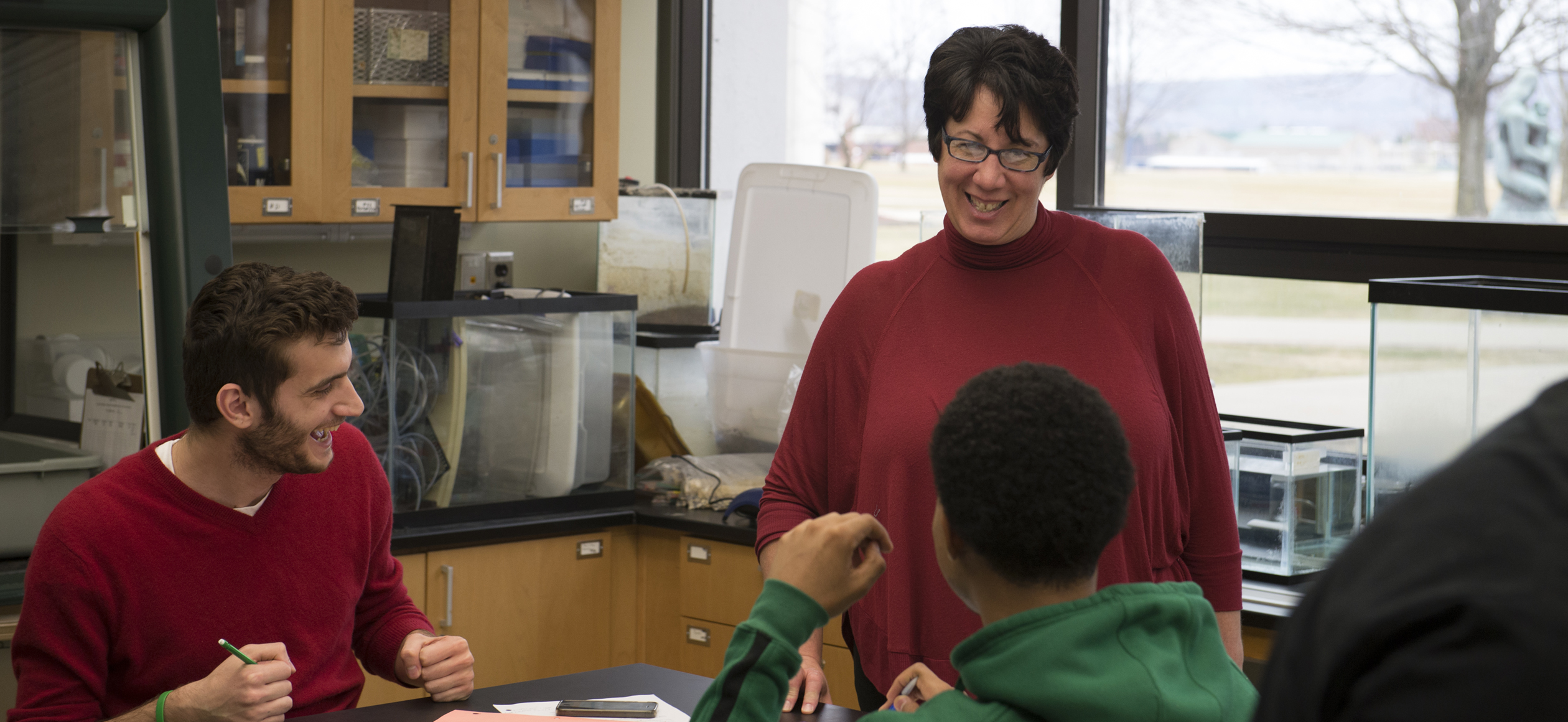SPRING 2011: ASA GRAY SEMINAR SCHEDULE:
All seminars start at 4 pm (to ~ 515pm) in Donahue Auditorium (Rm 167 GSC)
31 January 2011
How cells control pH
Dr. Patricia Kane, Dept. of Biochemistry and Molecular Biol., SUNY Upstate Medical Univ.
My laboratory works on a proton-pumping ATPase, the V-ATPase, that is found in lysosomes, endosomes, and Golgi apparatus of all eukaryotic cells. This enzyme is responsible for using the energy from ATP hydrolysis to acidify these compartments, which are maintained at pH 4.5-6.5 in a cytosol that is at near-neutral pH. We use yeast cells to better understand how V-ATPase activity is controlled, since V-ATPases in human and yeast cells are very similar. We are able to measure cytosolic and organelle pH in living yeast cells with fluorescent pH sensors, and to test how the pH of these compartments responds to conditions outside the cell. We have also found that V-ATPases inside the cell change their activity in response to pH changes outside the cell, and that V-ATPases actively collaborate with other proton pumps to ensure proper cellular pH regulation. This raises the interesting question of how cells "measure" pH in different compartments and respond appropriately to altered conditions. Perturbed V-ATPase activity is implicated in numerous diseases, including neurodegeneration, cancer, and osteoporosis, so understanding V-ATPase regulation is highly significant.
28 February 2011
Microclimate benefits for Monarch Butterflies overwintering in Mexico
Dr. Ernest H. Williams,Jr. and Christian A. Johnson, Department of Biology, Hamilton College
The extraordinary migration of monarch butterflies from eastern North America to the mountains of central Mexico protects them from freezing during wintertime. The microclimate varies within these mountain-top forests, however, so monarchs cluster in specific locations under the forest canopy. Recent studies I've done with collaborators show how the microclimate varies and how the butterflies take advantage of the least hazardous places to cluster. I'll describe temperature patterns within the forest and show photos of dense over-wintering aggregations of monarchs.
28 March 2011
Trophic control of a temperate grassland ecosystem: Elk, bison, and wolves in Yellowstone National Park
Dr. Douglas A. Frank, Department of Biology, Syracuse University
Climate is the primary factor controlling terrestrial ecosystems. However, when abundant, large herbivores also can play a central role. During this talk I will summarize research that colleagues and I have conducted over a 22 year span in Yellowstone National Park that documents important effects that large migratory herds of elk and bison have on grassland production and soil carbon and nitrogen processes. I will then describe how the re-introduction of the gray wolf in 1995 has altered the influence of ungulates on ecosystem dynamics and has resulted in profound and wide-spread changes in the ecology of Yellowstone National Park.
11 April 2011
Forest management changes plant community composition, diversity, and stability in the Pacific Northwest
Dr. Martin Dov?iak, Department of Environmental & Forest Biology, SUNY College of Environmental Science & Forestry
Global changes in land-use are the leading threat to biological diversity world-wide. Forests provide a unique habitat for many species, but they also serve as a source of wood and other materials used in a multitude of products important for humans, and they compete with other land-uses such as agriculture and human settlement. Consequently, the spatial extent of forests has dramatically decreased in modern times and most forests are now directly managed by humans. Forest management, and especially timber harvest, can negatively affect many forest species and lead to changes in the character of biological communities, loss of biological diversity, and decline in ecosystem services and ecosystem stability. Dr. Dov?iak will discuss how forest ecosystem management affects the composition, diversity and stability of forest understory plant communities in the Pacific Northwest, using analyses of long-term datasets from the Andrews Long-Term Ecological Research (LTER) site in Oregon and U.S. Forest Service long-term plots in the Cascade Mts. in Washington. Work to date suggests that while forest timber harvest decreases the abundance and richness of sensitive forest interior herbs and bryophytes, it can increase the abundance and richness of non-forest species, including invasive species. The stability of forest understory plant communities was positively related to community richness, and negatively to the proportion of colonizing non-forest species. Consequently, forest timber harvest appears to dramatically change the character and temporal stability of forest understory plant communities. Applications of these findings to the management of Pacific Northwest forests are discussed, including alternative strategies for green-tree retention harvests that have been adopted or are currently under investigation as a part of the Demonstration of Ecosystem Management Options (DEMO) study funded by the U.S. Forest Service.

